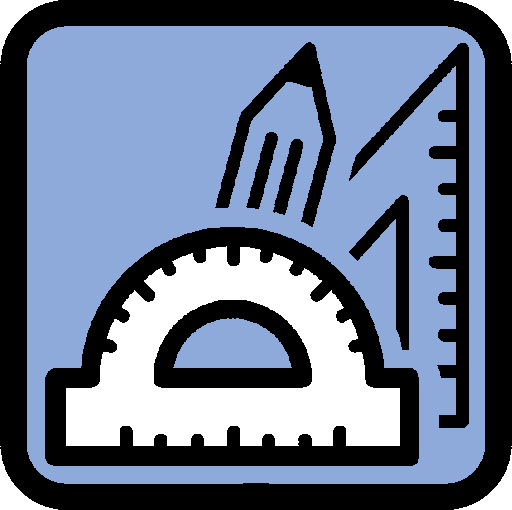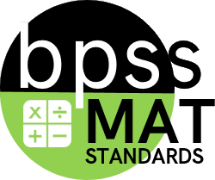MAT-08.GM.GF.06

|
8th Grade (MAT) Targeted Standard
(GM) Geometry and Measurement
(GF) Geometric Figures
Learners will use visualization, spatial reasoning, and geometric modeling to investigate the characteristics of figures, perform transformations, and construct logical arguments.
|
MAT-08.GM.GF.06 Apply the Pythagorean Theorem to determine unknown side lengths in right triangles in two and three dimensions on and off a coordinate plane, including authentic problems.*
 Proficiency Scale Proficiency Scale
Progressions
Angles/Triangles
- MAT-03.GM.G.01 In two-dimensional shapes, identify lines, angles (right, acute, obtuse), and perpendicular and parallel lines.
- MAT-04.GM.G.01 Identify, label, and draw points, lines, line segments, rays, and angles (right, acute, obtuse).
- MAT-04.GM.M.07 Recognize angle measures as additive and solve addition and subtraction problems to find unknown angles on a diagram.
- MAT-07.GM.GF.01 Draw triangles from given conditions using appropriate tools. Defend whether a unique triangle, multiple triangles, or no triangle can be constructed when given three measures of angles or sides.
- MAT-07.GM.GF.02 Describe the angle-pair relationships: supplementary angles, complementary angles, vertical angles, and adjacent angles. Solve for an unknown angle in a figure by applying facts about these angles.
- MAT-08.GM.GF.04 Describe the following angle-pair relationships: interior and exterior angles of triangles and angles formed when a transversal cuts parallel lines or intersecting lines. Solve for an unknown angle in a figure by applying
facts about these angles.
- MAT-08.GM.GF.05 Describe the relationship between the leg length and the hypotenuse length of a right triangle. Determine whether a triangle is a right triangle using this relationship.
- MAT-08.GM.GF.06 Apply the Pythagorean Theorem to determine unknown side lengths in right triangles in two and three dimensions on and off a coordinate plane, including authentic problems.
- MAT-10.GM.01 Know precise definitions of angle, circle, perpendicular line, parallel line, and line segment based on the undefined notions of point, line, and plane.
- MAT-10.GM.09 Prove and apply theorems about lines and angles.
- MAT-10.GM.10 Prove and apply theorems about triangles.
- MAT-10.GM.18 Recognize how the properties of similar right triangles allow for trigonometric ratios to be defined and determine the sine, cosine, and tangent of an acute angle in a right triangle.
- MAT-10.GM.19 Explain and use the relationship between the sine and cosine of complementary angles.
- MAT-10.GM.20 Solve applied problems involving right triangles using trigonometric ratios, the Pythagorean Theorem, and special right triangles (30º, -60º, -90º, and 45º-45º-90º).
- MAT-10.GM.21 Solve unknown sides and angles of non-right triangles using the Laws of Sines and Cosines.
- MAT-10.GM.23 Construct the incenter and circumcenter of a triangle. Relate the incenter and circumcenter to the inscribed and circumscribed circles.
- MAT-10.GM.24 Construct a tangent line from a point outside a given circle to the circle.
- MAT-10.GM.26 Recognize that the radian measure of an angle is the ratio of the length of the arc to the length of the radius of a circle.
- MAT-12.AR.F.16 Extend right triangle trigonometry and apply knowledge of the unit circle to determine values of sine, cosine, and tangent for multiples of π/3, π/4, and π/6.
- MAT-12.AR.F.17 Use the Pythagorean Identity sin² (θ) + cos² (θ) = 1 to find sin (θ), cos (θ), or tan (θ) given sin (θ), cos (θ), or tan (θ) and the quadrant of the angle.
- MAT-12.GM.03 Determine and apply appropriate formulas to solve right and non-right triangle problems in context
|


